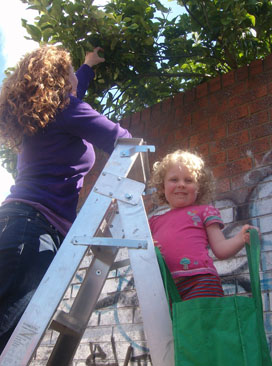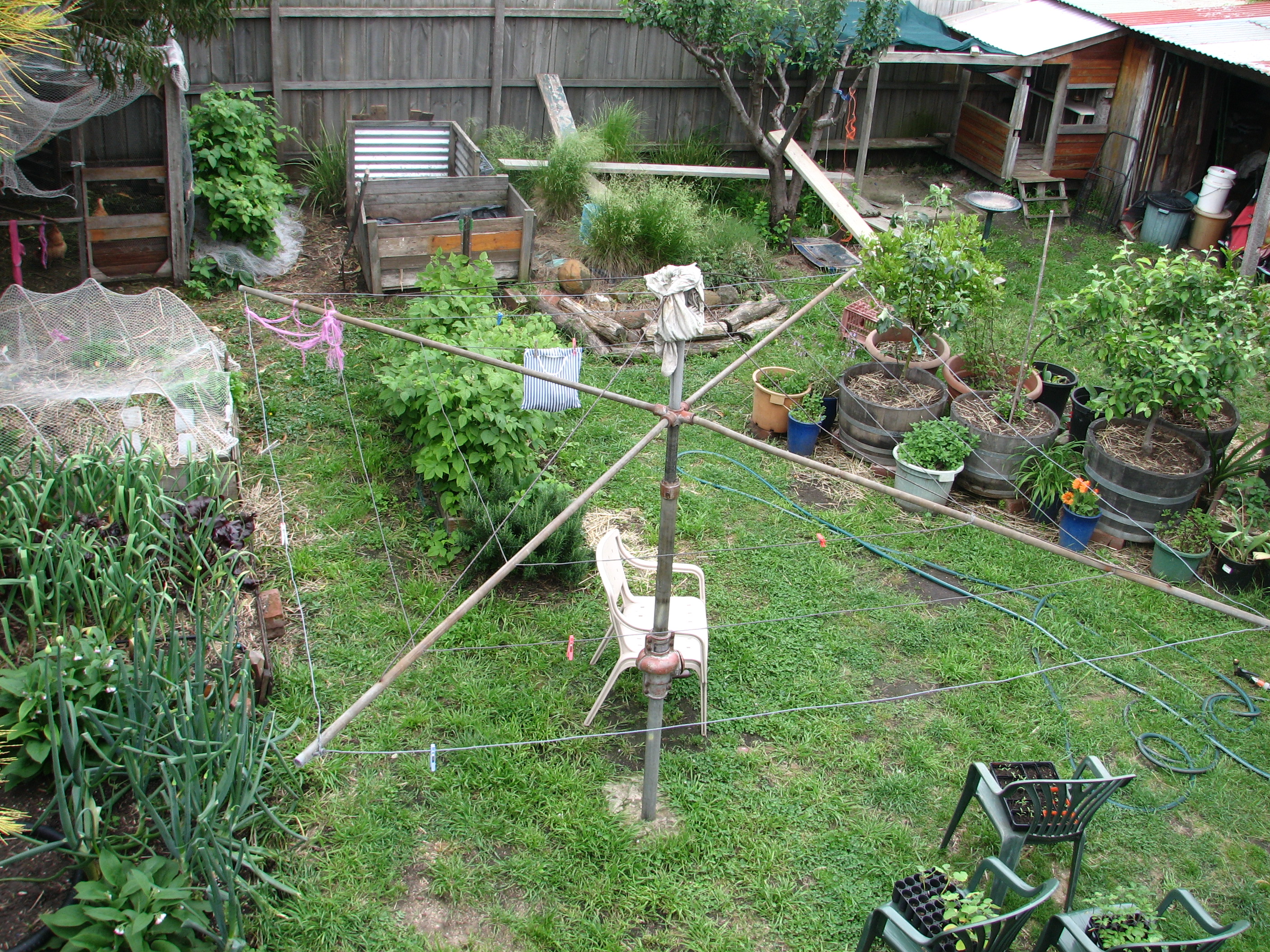When I was 25, Jonathan and I moved from North Queensland to the centre of Melbourne. We joined a mission community living at the back of the Baptist church on Collins Street in Melbourne’s CBD. We lived there for three years, surrounded by the concrete jungle. In that time I started growing tomatoes in polystyrene boxes, a chilli tree, and various herbs in assorted pots. On the wooden fire escape at our backdoor, enough sunshine reached through the surrounding heights of glass and concrete to help them grow. It was good. And, for me, it was the beginning of a new connection to the earth.
The food we choose to eat, and the way we eat it, reflect our faith. As Wendell Berry writes: “To live, we must daily break the body and shed the blood of creation… when we do this knowingly, lovingly, skillfully, reverently, it is a sacrament.” Our creation story tells us that we were formed out of the soil and given the vocation of caring for the earth (Genesis 2:7,15). But cities, by their nature, disconnect us from food and from the soil from which it comes, and force us into dependence on food systems which do harm to the land, the animals and the humans involved with them. For us, finding ways of eating that are kinder and more just, has been one of the great challenges of living in the city. But it has also become a creative endeavor which we have discovered brings enormous satisfaction.
When we moved from the CBD and first started renting in Footscray, an inner-city suburb of Melbourne, one of the first things we did was to dig up the grass and make some veggie patches. Eating produce grown with the care of our own hands was very satisfying. It required diligence, observation, care, and the attention of our minds. In growing veggies in the backyard we found a place for us to restore some of the connections between ourselves, God, and the earth.
In Summer, we grew roma tomatoes in three beds of approximately 2 ¼ m2 , and yielded 20-30kg of tomatoes. Every March we bottled from this harvest which provided us with 6-8 months supply of tomatoes for cooking, instead of buying tinned tomatoes. In a bed of similar size, we grew another of our household’s staples: garlic. The large majority of garlic in Australia is imported from China and the USA. To allow for the long storage periods required in this process, garlic is usually sprayed with sprout inhibitors before harvest, or irradiated after harvest. They are often bleached with chlorine to whiten the skin. Entering Australia, the bulbs are then fumigated with Methyl bromide. If we needed any inspiration to grow our own organic garlic, this was it! And, we have found it to be fantastically simple and inexpensive to grow.
Deciding what to grow in the limited space which we had in this backyard was guided by the types of food we enjoyed, food which we knew we could grow, and often, just wanting to learn how something grew. Other folk in our neighbourhood have always been a great source of knowledge on growing food locally. For a number of years we irregularly attended our local ‘Harvest Swap Meet’. This is a monthly gathering where people bring along any excess from their garden and swap it with others’ excess from their garden. There were always loads of herbs and greens and I ate many things for the first time through the harvest swap.
During the 11 years we lived in Footscray, an essential part of our household’s weekly food supply was our membership with a local organic fruit & vegie collective called the WOC (Western Organic Collective). Buying organic fruit and vegies was made affordable for us through this method of community bulk buying. We got a box of mostly seasonal organic fruit & vegies every week for $20 which largely supplied our needs for the week. In return, members of the WOC join in the work of sorting and delivering boxes once a month. (see www.organicfoodcoop.org.au). Through the WOC we also bought bulk ‘dry’ goods such as flour, sugar, rice, oats, lentils, dried fruit & nuts, and so on. This drastically reduced the use of plastic and other packaging in our household, and made organic food accessible to us at a price we could afford. The bulk purchase of some of these ‘dry’ goods also fine-tuned our use of them. For example, we learnt to use the flour to make our own bread and pasta, further reducing our plastic packaging consumption.
 |
|
Another great source of local food for us over the years has been ‘urban gleaning’ (see Leviticus 23) from the multitude of fruit trees in people’s yards. Not only is this a surprisingly abundant source of chemical-free food, but offering to pick from, and share the produce of over-burdened and un-picked fruit trees is a great way of meeting people in your neighbourhood. In Footscray, we managed to source apricots, peaches, apples, figs, cherries, kumquats, lemons, oranges, nashis, quinces, pears, and plums. We bottled and dried (using a food dehydrator) large amounts of this and enjoyed eating it all year through. Sharing some of this produce in the form of jams and cordials with the houses the fruit came from, adds another bond to neighborhood relationships.
Connecting locally, but with a wider reach, farmers markets have developed strength and breadth. They provide a great opportunity to connect with local growers who can tell you exactly how their food is grown. As with growing your own food, farmers’ markets show what is in season and what the land around the local region is actually capable of growing. Despite what our supermarkets provide, many fruit and vegetables are not locally available all year round. It’s challenging explaining to my children why we are not buying the gorgeous deep red USA cherries from the supermarket - in June!
Over the years living in the city we intentionally sought out ways of making urban/rural connections around food. It became important to us to not only know where and how our food is grown, but to grow a deeper understanding of what is involved both for farmers, for animals and for the land. A key focus for us in this endeavour has been sourcing sustainable meat which prioritises the welfare of the animal in both life and death. With an ear out for someone who knows someone, we have been able to source beef, lamb, and pork from small-scale producers around Victoria. Going to visit most of the farms and properties where this was raised, and even meeting the animals destined for the table, adds a new dimension to a sense of connection, responsibility and reverence with regard to our food.
In more recent years, we have become acquainted with the great urban food gathering tradition of dumpster diving. Originally, dumpster diving was done by folk out of economic necessity, but has now been taken on by those with a concern for unnecessary waste and the subsequent ecological impact. It is now thought that as much as one third of world food production goes to waste. Certainly the scale of unnecessary waste that comes from our supermarkets is something that has to be seen to believed. Done well (there are many things really best left in the dumpster!), dumpster diving can make a good contribution to the household food budget.
At the beginning of this year we moved to the regional city of Bendigo, central Victoria, and we find ourselves now having to figure out how to make the connections to food that we established over a decade in Footscray. In a regional city some things are easy, but others are harder. The things have come easy: a Sunday market with local farmers; new friends who have supplied us with lamb; continuing to bulk buy fair trade goods; dumpster diving. The hardest thing has been the loss of our organic food cooperative in Footscray, and we can only now afford to buy a little organic fruit and vegies. Along with a determined friend, we are working towards a small informal co-operative arrangement for purchasing dry goods in bulk. We look forward to discovering summer fruits in local backyards around us, and now have space to grow our own fruit trees. Indeed growing more of our own food will be essential if we wish to continue to eat organic fruit and vegies.
The possibilities for re-shaping our understanding and practice of food in an urban environment are really hopeful. At no point have we radically overhauled how we eat. Rather, bit by bit, year by year, we have explored a new area, added a new skill, habitualised a new practice, and found the ongoing creative challenge of doing so enormously rewarding and satisfying. What’s more, we have discovered along the way that seeking alternative food options tends naturally to build relationships and community; other people become more than just optional relationships, they become useful and necessary. The challenge of food and eating is one that will be ongoing and never really ‘solved’ and that is as it should be. It only means the pleasure of food and eating will never be diminished.

